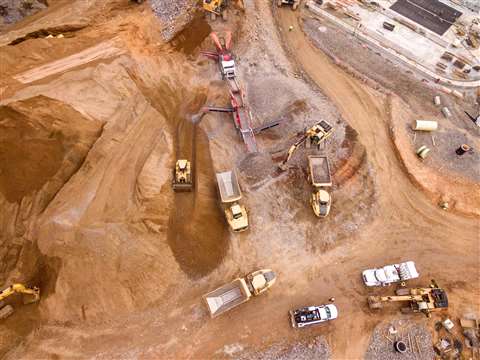New roadmap for how construction can cut emissions
23 September 2019

As part of World Green Building Week, the World Green Building Council (WorldGBC) has issued a new vision for how buildings and infrastructure around the world can reach 40% less embodied carbon emissions by 2030, and achieve 100% net zero emissions buildings by 2050.
Building and construction are responsible for 39% of all carbon emissions in the world, with operational emissions (energy used to heat, cool and light buildings) accounting for 28%. The remaining 11% comes from embodied carbon emissions, or ‘upfront’ carbon that is associated with materials and construction processes throughout the whole building lifecycle.
The Bringing embodied carbon upfront report proposes solutions to accelerate immediate action by the entire building and construction value chain.
The report sets out to demystify the challenge of addressing embodied carbon emissions, through breaking down complex terminology and creating a common language to set a consensus-built definition for net zero embodied carbon.
Addressing upfront carbon is crucial to fighting the climate crisis, as new construction is expected to double the world’s building stock by 2060 causing an increase in carbon emissions.
The report warns that change will not happen unless there is a radical shift in how industry works together.

Approaches such as maximising the use of existing assets, promoting renovation instead of demolition and seeking new circular business models that reduce reliance on carbon intensive raw materials are also needed.
WorldGBC is calling for new national and sectoral roadmaps to be developed, such as those produced in Finland, Norway and Sweden, with support from industry and policymakers.
Demonstrating the feasibility of achieving zero carbon goals, the report is supported by case studies of existing best practice across the building industry.
Businesses involved in design and delivery have already committed to ambitious individual or national decarbonisation strategies. For example, contractor Skanska, is enabling projects to be evaluated for full lifecycle impacts and materials suppliers are also taking a leading role
Cities have also been instrumental in pushing for new innovations and approaches. Oslo, Norway, has a commitment to fossil free construction sites while Vancouver, Canada, has mandated that embodied carbon be reduced in new buildings by 40% by 2030.
Anders Danielsson, President & CEO, Skanska, said, “This report sets out bold ambitions for embodied carbon reduction in the built environment which we welcome at Skanska. We recognise our responsibility and see an increased sense of urgency in our work to reduce carbon, which started many years ago…. This report provides a concise roadmap of what that could entail.”




